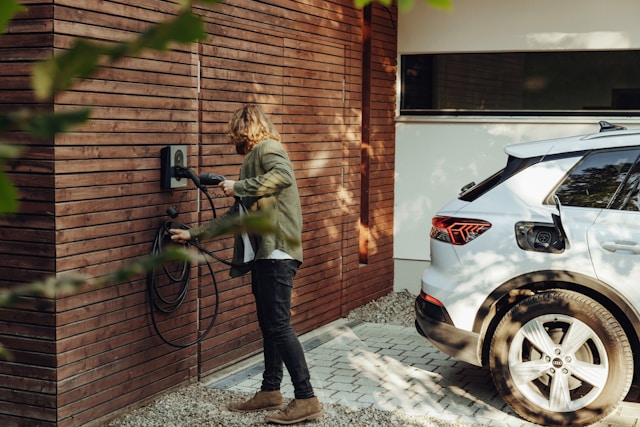Utes and large SUVs will not have to be as green as expected under changes to vehicle efficiency standards, which one automaker said would put Australia in the “middle of the pack” on a global basis.
Transport Minister Catherine King and Energy Minister Chris Bowen revealed the government’s final plans for new vehicle rules on Tuesday, alongside representatives from automakers including Toyota, Tesla and Hyundai.
The fuel-efficiency laws, to be presented to parliament on Wednesday, will pause penalties for exceeding emission targets for the first six months of its operation.
Industry groups and auto brands mostly welcomed the introduction of the standard, which they said was necessary to lower Australia’s transport pollution.
Ms King said the government settled on a final design for the standard after receiving more than 9000 submissions and negotiating with vehicle brands.
“In order to make sure we had the right model for Australia, we’ve had to engage directly with manufacturers,” she said.
“We want to get fuel savings for consumers, we want to absolutely make sure we get choice in vehicles for the Australian market and we also want to make sure we get emissions down at the same time as making sure that Australians can still continue to buy the cars that they love and use.”
The revised policy will still seek to reduce emissions from passenger cars by 61 per cent in 2029, but has relaxed proposed emission cuts for light commercial vehicles, such as utes, by 35 per cent.
It will also move some large four-wheel drive vehicles, such as the Toyota LandCruiser, Ford Everest and Isuzu MU-X, into the commercial category, giving them lower emission reduction targets.
Penalties and credits under the standard will not apply until July 2025, six months after the law comes into effect, and a $60 million fund will be established for electric vehicle chargers in car dealerships.
Energy Minister Chris Bowen said the government negotiated with vehicle brands, industry and environmental groups to reach an acceptable compromise.
“Not everybody here has got everything they asked for,” he said.
“Some people wanted us to go harder and faster, some had concerns and wanted us to slow, but everybody here today has had a say, everybody today has had genuine concerns taken on board and everyone today recognises that Australia can now move on.”
The relaxed rules come days after America’s Environmental Protection Agency announced new vehicle regulations with additional credits and a later target of 2032.
Tesla Australia senior energy policy advisor Sam McLean said the policy presented a solid compromise between traditional car brands, electric vehicle makers, environmental concerns and consumer demand.
“This is a very moderate standard that takes Australia from being really in last place in this transition to the middle of the pack,” he said.
“In doing so, it will save motorists thousands of dollars on petrol.”
Electric Vehicle Council chief executive Behyad Jafari said the government had shown “mettle” to introduce the standard after previous attempts had failed and hoped the rules for new cars would give motorists more efficient choices.
“Thanks to these standards Australia will no longer be considered the global dumping ground for the world’s most inefficient vehicles,” he said.
Some groups were less effusive about the new standards, however, with the Federal Chamber of Automotive Industries saying it had concerns about its impact on brands and consumers, and Australian Automotive Dealer Association chief executive James Voortman saying it was “not the vehicle emissions standard the industry asked for”.
Toyota Australia president Matthew Callachor said the policy would necessitate big changes to its future range, even though it welcomed the final design.
“There still remains a significant challenge as we look ahead,” he said.
Environmental groups including the Climateworks Centre and Climate and Health Alliance had concerns about the smaller emission cuts for utes and some SUVs.
Greenpeace Australia Pacific campaigner Joe Rafalowicz said the change would allow 20 per cent more carbon pollution than the original design and Smart Energy Council chief executive John Grimes said the reclassification of SUVs was disappointing.
“Calling a Toyota LandCruiser a light commercial vehicle does not pass the school drop-off test,” he said.
Jennifer Dudley-Nicholson
(Australian Associated Press)





